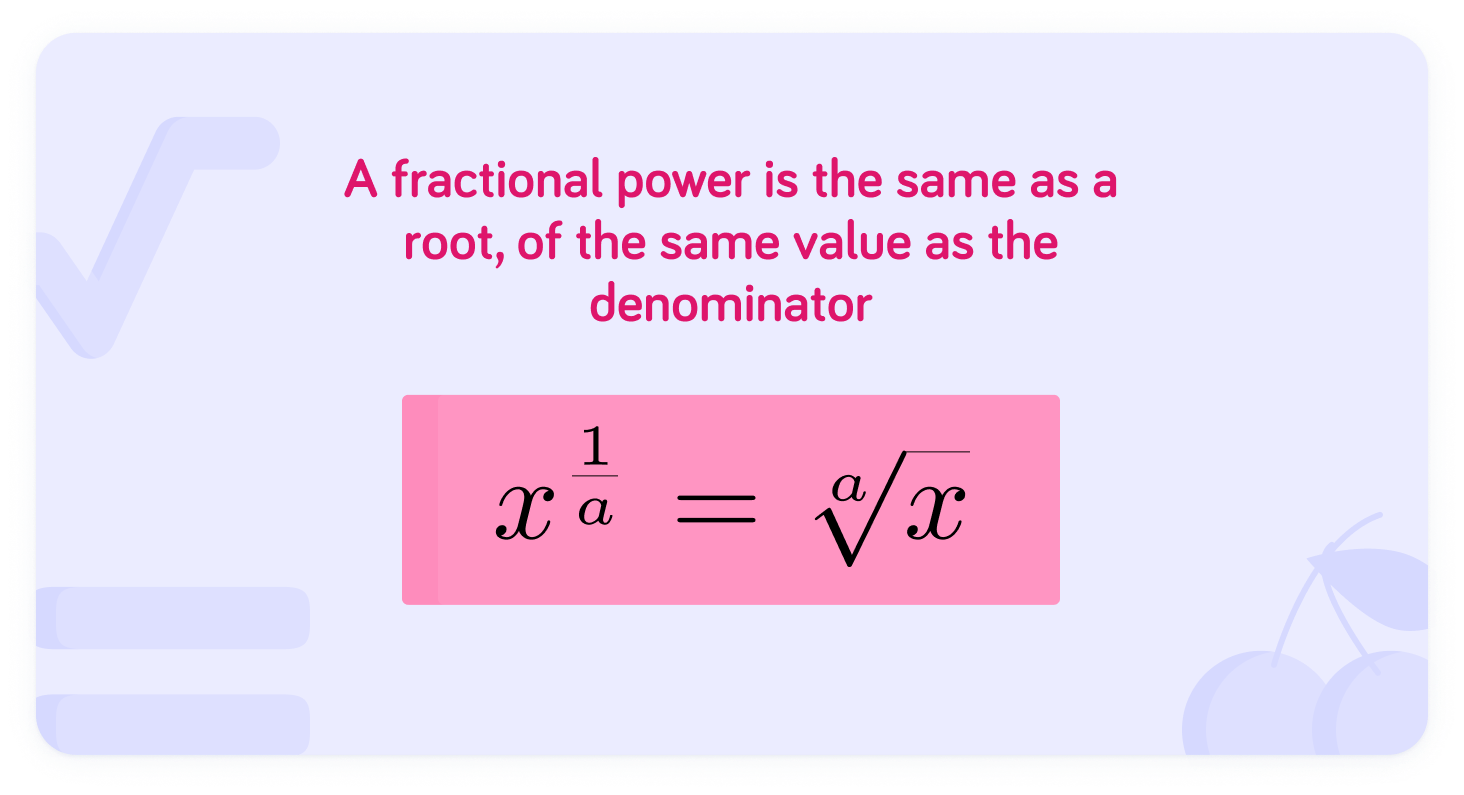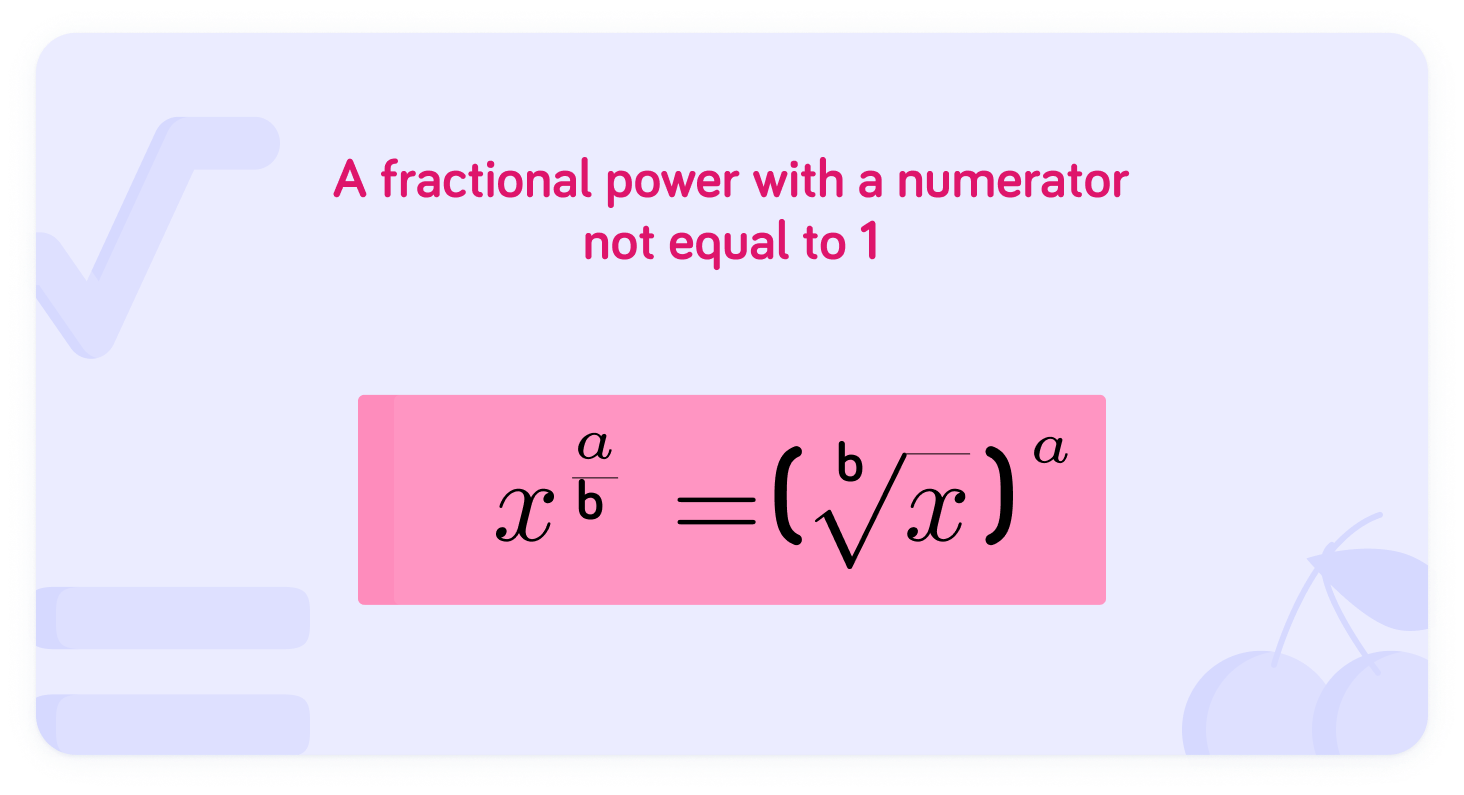YOU ARE LEARNING:
Indices: Fractional Powers

Indices: Fractional Powers
Fractional indices are like finding roots, while negative indices are like finding reciprocals. We can also combine these in more difficult scenarios.
The power in an index number is not always an integer.
x21 is an example of an index number with a fractional power.
To understand how fractional powers work, let's consider x21 and multiply it by itself. What is x21×x21?

When we multiply a number by itself, we get a square, for example a×a=a2. In this example what is a?

In our example, we had x21×x21=x.
This means that x21 is the square root of x or x21=x.
Let's have a look at the index number with fractional power 31
Our example is y31.
This time, work out y31×y31×y31.

What is a number that is multiplied by itself three times, for example a×a×a?

We know that y31×y31×y31=y
This means that y31 is the cube root of y or y31=3y.
We can see a pattern here x21=x
y31=3y.
The general rule, a fractional power with numerator 1, is the root of the base number of the same value as the denominator.

What is the meaning of a61?


We can work out some values. What is 1621?


Let's try another one, what is 2731?

We can apply this to other fractional powers:
6431=364=4
62541=4625=5
What is 3251?

We can also use larger fractional powers, where the numerator is more than one.
Let's try an example: 832
We can split the fractional power 32 into two parts as 32=31×2. How can we show this using brackets?

We can now work out the answer is two parts. First, what is the result of 831?

Replace 831 with 2 in (831)2.
(2)2
Find(2)2.

Nice! 👍
The answer is 832=4.
Let's try a slightly harder one. What is 64−32?
We can generalise the rule
Notice that there is a negative in the power too, but we can use the rule in the same way.

The power in 64−32 is 3−2 , how can we split this down to use in the rule?

We now have 64−32=(6431)−2. Let's work out what is in the brackets, what is 6431?

We can now replace 6431 in (6431)−2 with 4.
This gives (4)−2.
Finally we work out (4)−2. Take care with the negative sign - this is asking you to take the reciprocal of the positive power.

You have shown that 64−32=161
Well done! 👍
Final question: what is the value of 2732?

Summary!
A fractional power with a numerator of 1 is the same as the root of the same value as the denominator
x21=x
y31=3y

A fractional power with a numerator greater than 1
is the root of the base number of the same value as the denominator then raised to the power of the same value as the numerator.

